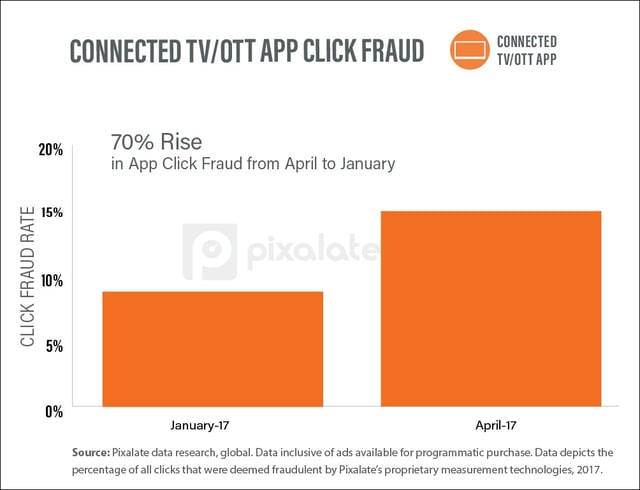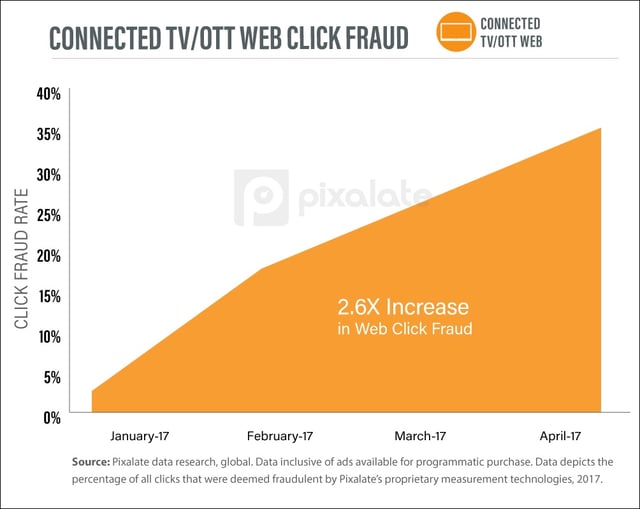
Our series on programmatic click fraud has explored desktop, smartphone, and tablet click fraud rates across display and video inventory.
Today, we're delving into the emerging world of Connected TV and Over-The-Top (OTT) inventory sold via programmatic. Fraudsters can hack into Smart TVs and OTT devices in many ways. One of the ways they infiltrate our Connected TV/OTT devices is via click fraud.
Yes, click fraud does exist in this world, too.
Connected TV/OTT app advertising via programmatic saw click fraud rates increase 70% during the first four months of 2017. But there was plenty of volatility in that span.

While click fraud within Connected TV and OTT apps saw volatile growth, click fraud within web environments saw progressive growth each and every month to begin 2017.


Connected TV/OTT click fraud on web ads rose in each successive month from January through April to begin 2017. It was 2.6x as big of a problem in April as it was in January.
It was much more volatile within apps, with click fraud at roughly 10% in January and March and roughly 20% in February and April.
Overall, our research reveals that click fraud on Connected TVs and OTT devices is growing — and sometimes quite volatile. Marketers should have a plan in place to account for the turbulent, growing problem of click fraud when using programmatic to buy or sell ads in the Connected TV/OTT space.
*By entering your email address and clicking Subscribe, you are agreeing to our Terms of Use and Privacy Policy.
These Stories on Thought Leadership
*By entering your email address and clicking Subscribe, you are agreeing to our Terms of Use and Privacy Policy.

Disclaimer: The content of this page reflects Pixalate’s opinions with respect to the factors that Pixalate believes can be useful to the digital media industry. Any proprietary data shared is grounded in Pixalate’s proprietary technology and analytics, which Pixalate is continuously evaluating and updating. Any references to outside sources should not be construed as endorsements. Pixalate’s opinions are just that - opinion, not facts or guarantees.
Per the MRC, “'Fraud' is not intended to represent fraud as defined in various laws, statutes and ordinances or as conventionally used in U.S. Court or other legal proceedings, but rather a custom definition strictly for advertising measurement purposes. Also per the MRC, “‘Invalid Traffic’ is defined generally as traffic that does not meet certain ad serving quality or completeness criteria, or otherwise does not represent legitimate ad traffic that should be included in measurement counts. Among the reasons why ad traffic may be deemed invalid is it is a result of non-human traffic (spiders, bots, etc.), or activity designed to produce fraudulent traffic.”

